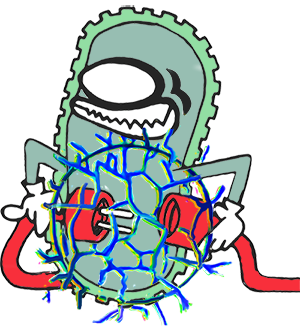Team:TU Delft-Leiden/Modeling/Curli
From 2014.igem.org
Curli Module
The goal of the conductive curli module is to produce a biosensor that consists of E. coli that are able to build a conductive biofilm, when induced by a promoter. The biofilm consists of curli containing His-tags that can connect to gold nanoparticles, see the conductive curli module. When the curli density is sufficiently high, a dense network of connected curli fibrils is present around the cells. Further increasing the amount of curli results in a conductive pathway connecting the cells, thereby forming conductive clusters. Increasing the amount of curli even further, a sufficient amount is present to have a cluster that connects the two electrodes and thus have a conducting system.
The goal of the modeling of the curli module is to prove that our biosensor system works as expected and to capture the dynamics of our system. So, we want to answer the question: "Does a conductive path between the two electrodes arise at a certain point in time and at which time does this happen?" However, we not only want to answer the question if our system works as expected qualitatively, but we also want to make quantitative predictions about the resistance between the two electrodes of our system in time.
To capture the dynamics of our system, we have implemented a three-layered model, consisting of the gene level layer, the cell level layer and the colony level layer:
- At the gene level, we calculate the curli subunits production rates and curli subunit growth that will be used in the cell level.
- At the cell level, we use these production and growth rates to calculate the curli growth in time, which we will use at the colony level.
- At the colony level layer, we determine if our system works as expected, ie. determine if a conductive path between the two electrodes arises at a certain point in time and at which time this happens. We also determine the change of the resistance between the two electrodes of our system in time.
A figure of our three-layered model is displayed below.
Click in the figure to move to the corresponding page.

 "
"






